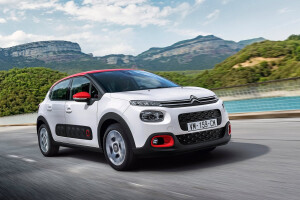Latest Review
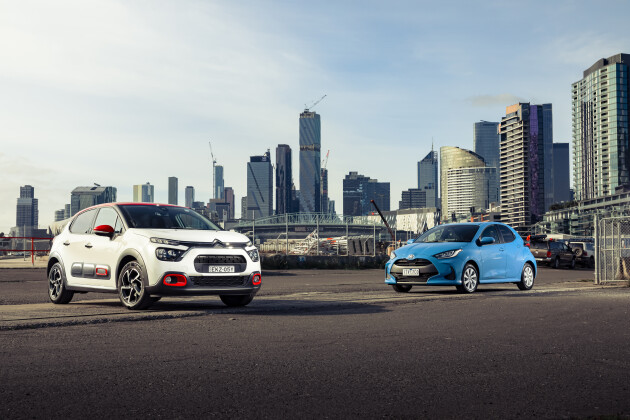
2021 Toyota Yaris SX vs Citroen C3 comparison
They are the survivors of the decimated light-car class – ‘premium-lites’ that suggest you look past the price tag, and focus on form and function
Among Melbourne city’s towers, the new-generation Toyota Yaris lapping the block for photography is just a small blue dot. One that’s almost lost among the toxic-green bike lanes and dinging trams that rumble through the city streets.
But it’s much harder to overlook the significance of the Yaris’s rebirth in the light-car segment. New powertrains and advanced safety technology have almost priced the nameplate out of the entry-level segment it’s belonged to for so long.
Go for a base Toyota Yaris today – still offered in Ascent trim as before but no longer with a manual transmission – and it’ll cost you $23,630. That’s a generational price increase of over $7K; a staggering 35 percent.
Upgrade to SX trim for $3390, then tick the box for the hybrid-assisted 1.5-litre three-cylinder petrol powertrain, adding another $2000, and suddenly you’re looking at $29,130 before on-roads to buy our tester. Add $600 for Eclectic Blue paint, and that’s a grand short of an equivalent trim Corolla.
However, this swell in price is not contained solely within Toyota’s ranks. With the segment losing everyone from Honda to Holden and Hyundai in the last five years, taking a cluster of sub-$20K models with them, it’s rocketed the average vehicle price from around $23K to $31K. And the rearranged territory brings fresh conflict.
Cue the Citroen C3. Coming from a single-variant model range built in Slovakia, it hasn’t always been priced at $28,900 – despite its European pretensions and style making it easier to accept that idea. When the third-generation model debuted here in 2016, it was only $400 more expensive than the then top-of-the-range Yaris, at $22,990.
To keep in step with competition, Citroen has slowly built up the C3’s specification list over the years, increasing its price slowly alongside it.
Whether oblivious or ignorant to the paradox of an expensive ‘affordable’ small car, our pair share more than just awkward market positioning. Each five-door hatchback drives the front wheels through an automatic transmission married to a three-cylinder engine. However, their styling finds sophistication in different ways.
The hybrid’s economy benefits are real, too, as the Yaris drinks 3.8l/100km while on test with us. That’s 0.5L/100km more than claimed on a combined cycle, but crucially 1.2l/100km less than Citroen’s claimed figure.
Details massaged into the Toyota’s sculpted bodywork offer new cohesiveness. Zoom in on those tail lights, for starters. The darkened element between each tail light pulls down the rear window. Its raised contour follows character lines carved into the rear doors, separating the rear guards into almost-muscular haunches.
You’d struggle to find anything so sophisticated on the last generation Yaris or packaging so clever. Built on the B version of Toyota’s TNGA platform, the new Yaris grows its wheelbase 40mm while sitting 5mm lower than before while shaving 5mm from its length. And despite pumped front guards and the gaping-wide grille, width remains unchanged at 1695mm.
To me, the Yaris apes a Mazda 2’s striking proportions. But while it looks groomed by the wind, the C3’s cutesy bubble shape looks swollen with as much volume as possible. Unsurprisingly, the C3 is slightly longer and broader than the Yaris, but rides on a shorter wheelbase and is a touch lower.
As both cars stride up and down Dockland’s main street for our snapper Alastair Brook, it’s obvious the C3 is not at risk of going unnoticed. It dials up the flair with a two-tone paint job and Airbumps on its doors, while the separated head-, fog- and daytime-running lights exaggerate its divisive styling.
For this mid-cycle update, Citroen tweaked the C3’s wheel design, updated the Airbump and patterned the meeting point between roof and body colour. It’s also restyled the front bumper design – but only the eagle-eyed will catch the differences in chrome highlighting and light shape.
Meanwhile, Toyota’s designers should have channelled the C3’s enthusiasm into the Yaris’s interior. There’s nothing wrong with the layout or sweeping curvature in everything from the dash to the door handles, but the mix of the matte and black plastics, plus drab cloth seats with unsupportive foam do nothing for aesthetic appeal.
Things do improve when you grab the leather-stitched steering wheel. Its gauge and diameter are perfect, and the driving position is excellent. Toyota’s tilted the steering wheel forward six degrees while extending its reach and rake adjustment range by 10mm. The lower cowl permits lowering the driver’s seat, while also moving the driver’s seat back 60mm improves legroom, allowing a relaxed, outstretched posture.
Climbing aboard the C3 is like upgrading an airline class, but on an older plane. Pulling the doors shut with the stitched leather grab handles – that look stolen from designer luggage – speaks to a higher grade of luxury, underscored by new seats. A matte teal insert in the dash brightens things up with coloured door bins, as well.
New seat cushioning – supposedly up from just 2mm to 15mm – is plush and supportive. And the front seats feel like expensive French office chairs you could sit on for hours. Elsewhere, rake and reach adjustment on the steering wheel aid a decent driving position, while leather on touchpoints like the wheel and the shift knob underscore its class.
What marks down the C3 cabin is a high beltline obscuring what’s directly in front. The gear shift pattern diagram is also hidden away in the storage cave of the centre console, hiding guidance on how to navigate the clumsy shift pattern.
While the C3’s central cluster screen works fine, it has no function beyond displaying the set cruise control. Whereas black-and-white graphics really drive home the Citroen’s age.
Switch to the Yaris, and its cabin welcomes you into the future. Its left dash binnacle houses a power usage bar, rather than an rpm dial, complemented by a colour 4.2-inch instrument LCD screen displaying a diagram depicting the powertrain’s energy flow in real-time.
It underscores how frequently the powertrain juggles between battery regeneration, EV mode, and hybrid drive in the CVT’s seemingly infinite gear ratio spread to offer torque when you need it. Or EV-assisted frugality when you don’t.
With 59kW/141Nm, the Yaris’s electric motor easily matches its new 67kW/120Nm Atkinson-cycle petrol inline-triple for grunt. The electric motor fills dips in the petrol engine’s power delivery greatly and aids take-off and low-speed response.
The SX Hybrid’s multi-injected three-pot gets a bit shouty, but that’s as uncouth as the experience gets since the powertrain operates seamlessly when left to its own devices.
Despite an EV Mode button next to the handbrake, it’s available only at very low speed and for short durations, like when ambling through stuffy car parks.
The hybrid’s economy benefits are real, too, as the Yaris drinks 3.8l/100km while on test with us. That’s 0.5L/100km more than claimed on a combined cycle, but crucially 1.2l/100km less than Citroen’s claimed figure.
But in the real world? Despite the brand investing heavily in upgrading its fleet of PureTech engines to comply with Euro 6 emissions, the turbocharged 1.2-litre three-cylinder chugs down 8.8L/100km on test, making it a hefty 5l/100km thirstier than its hybrid rival.
Impressively, the new C3 engine has squeezed more grunt from less capacity, producing 81kW and 205Nm, changed from the old car’s 88kW/160Nm. Put this down to the C3’s HN04 unit gaining direct injection and friction-reducing tweaks.
On the go, the engine’s a charming unit, building revs with a throaty off-beat rumble and willingly cruising past its 5500rpm redline to upshift at 6000rpm.
Meanwhile, there’s no real hurry from the C3’s six-speed automatic. Even though it’s smooth-shifting, there’s a perceptible lag between each gear, which contributes to the sense the C3 would fall behind the Yaris in a drag race. But not by much.
Keeping the turbo triple on song around 2500rpm perks up its mid-range, which is helpful getting around town. But finessing soggy throttle tip-in and a heavy flywheel effect in traffic is taxing.
Despite their age differences, the car-gods have gifted the Yaris and C3 an evenly matched package on paper when it comes to suspension. Both use strut-front and torsion beam rear designs to locate their 16-inch wheels. There’s also a mere 5kg between their kerb weights.
It’s the Yaris that fares better through the urban jungle, where softer springs dismiss speed humps with a nice cushion. But although it moves off centre with natural agility, the low-grip Dunlops fail to convert firm damping and a low centre of gravity into cornering ability. The nicely weighted steering has no meaningful feedback, either.
Meanwhile, the C3, with a platform that goes back to 2002, bobs around on firmer springs. On wider tyres than the Yaris – its Primacy 3s measure 205mm versus 185mm but share the same 55-profile – they provide much-needed cushioning.
Hard cornering exposes the C3’s soft damping and higher roll centre. It often leans on the outside tyre’s sidewall, but the C3 also has the grip and steering feedback to track your intended line. And the damping comes good on the highway, revealing a cross-country pliancy lacking from the Yaris.
When it comes to braking, the C3 hauls down more convincingly with larger brake discs and better tyres.
The Yaris, meanwhile, struggles to strike the right balance between its front disc set-up, rear drums and hybrid regeneration.
But if you’re going to rack up kilometres in either car, the Yaris and its extensive safety kit frame it as the safer chaperone. It pips the C3’s equipment with active smarts like intersection collision assist and, crucially, active cruise control.
Meanwhile, the C3’s safety package only goes as far as to include lane-departure warning, distance alert, and autonomous emergency braking. New front parking sensors and tyre pressure monitoring are more convenience features.
Boil it down, though, and the comparison between these two is decided on more than box-ticking. The C3’s cabin does well to suppress tyre rumble on long journeys but is plagued by more wind noise. And although the Citroen’s cabin is easier on your eyes and arse, the Yaris delivers refinement almost everywhere else.
We’ve previously questioned if the Yaris would better off with a turbo triple, but here its hybrid powertrain convincingly trumps the C3’s unit for flexibility, response and economy. That last point is important, given the pair are also closely aligned on price.
The hybrid’s fuel economy could potentially save you hundreds of dollars over the long term. Factor in a 10-year battery warranty and two years of emergency assistance over Citroen (for seven in total), and the overall package stacks up nicely – if you let your head take the lead on a buying decision.
Consider your heart for a moment, and you’ll struggle to separate these two dynamically. The Citroen’s grippy handling, sturdy braking and softer highway ride cancel out the Yaris’s superior urban ride, sweeter reflexes, and crisper acceleration.
Exterior design is subjective, but the C3 has the prettier interior. On top of this, the C3’s off-beat engine note underpins a charisma missing from the Yaris.
Ultimately, the C3 is an engaging light hatch with appealing comfort and style, even if that is a little quirky. On the other hand, Toyota’s clean-sheet approach to the Yaris means it always had the natural advantage of youth and technology. This has plumped the price, yes, but the SX Hybrid goes to show you get what you pay for – much more than just a dismissible blue dot.
SCORING
Yaris: 7.5/10
C3: 7.0/10
Toyota Yaris SX hybrid and Citroen C3 Specifications
News
-
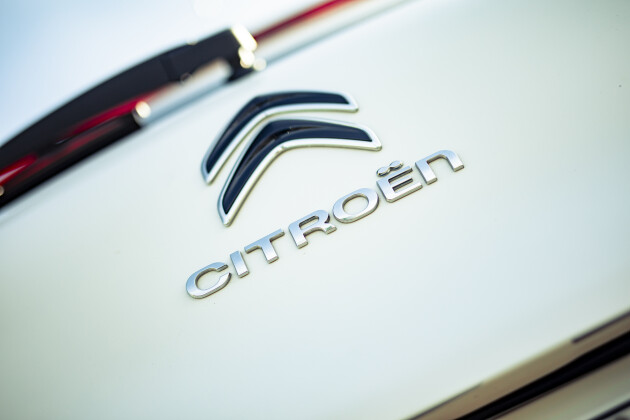 News
NewsCitroën yet to hit triple-figure sales in 2021
Year-to-date performance almost a third lower than 2020
-
 News
News2021 Citroen C3 brings extra comfort for no extra cost
The quirky French hatchback has received a nip and tuck as well as a few new additions to its standard features list
-
 Features
FeaturesFive car designs that missed the mark
Sometimes intelligent, cohesive design can be elusive. Here are five prime examples
-
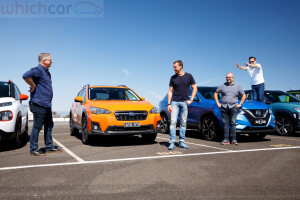 TV
TVGALLERY: 2019 WhichCar Auto Games
It was mayhem, and it was enormous fun. Check out our gallery of the 2019 WhichCar Auto Games
-
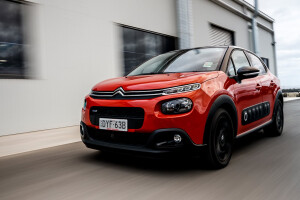
Citroen C3 2019 Car of the Year review
-
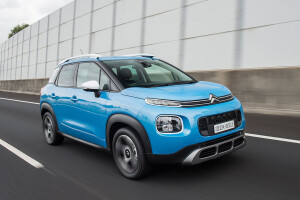
2019 Citroen C3 Aircross is the company’s first SUV
-

Sebastien Loeb returns to WRC
-
.jpg)
2018 Citroen C3 detailed



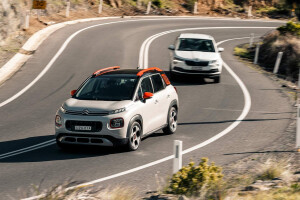
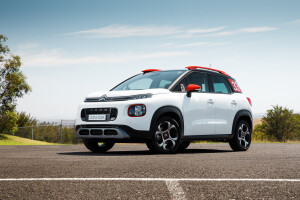
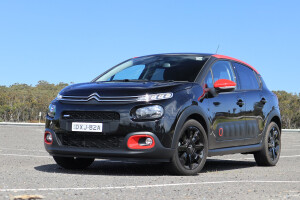

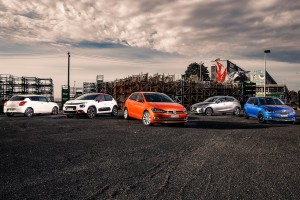
.jpg)

